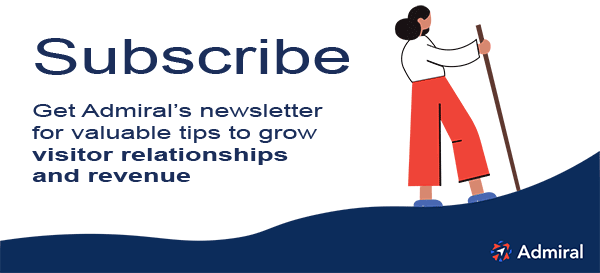Google has built its search business model on user trust and its ability to weed out untrustworthy players who try to manipulate its ranking systems. According to Google’s VP of Ad Privacy and Safety Products, Scott Spencer, Google continued to build trust in 2019 by blocking nearly three billion ads and suspending almost one million ad accounts. They also ended their relationship with 1.2 million publisher accounts. Google adblock filters affected 21 million webpages as part of Google's fight against bad ads.
According to Spencer, Google's adblock aim is to improve the overall integrity of the ads on Google's platforms, improve enforcement against deceptive ads and sites that consistently use serve them, and adapting their tools and technologies in real time.
What Are Bad Ads?
Bad ads are those seen as annoying, intrusive, or deceptive, according to user research and ad industry trade groups. Ads that interfere with the users' enjoyment of content on the page, or ads that are malicious in intent, are considered bad ads. Examples include pop-up ads, modal, autoplay video, screen take-over, blinking ads, and false claims.
Google reports they blocked more than 5,000 bad ads per minute in 2019, but in 2019 they prioritized ads that are deceptive and undermine trust. Google assigned an internal team “to track the patterns and signals” of these types of misleading ads:
- Phishing (Ex: ads by bad actors posing as an ad for a real passport renewal service, only to collect credit card and social security numbers)
- Posing as a government agency
- Trick-to-click (organizing pages to get people to click ads accidentally)
Google’s Spencer claims they blocked 50% more ads in the phishing and trick-to-click categories than the previous year.
Most recently Google has a team on high alert to track ads that may exploit an emergency situation, such as the COVID-19 pandemic. Google applies special focus during a “sensitive event” situation, per their posted advertiser guidelines, and can quickly start blocking those ads and accounts. Here are some of Google’s concerns for ads served during the coronavirus cycle:
- Price gouging
- Capitalizing on medical supply shortages
- Misleading promotion of COVID-19 relief or other services
- Misleading ads about cures and treatments
PS: Enforcement begins in August 202 for Google to block certain types of video ads in Chrome and YouTube content. See more: Google Chrome adblock for short-form video.
How This Impacts Publishers
- Adblocking continues to reduce revenue. The Google adblock report underscores that bad ads continue to be a problem, and bad actors find ways to get around Google's efforts. As a result, visitors continue to adopt and value adblocking technology, which threatens publisher revenues even if the publisher is responsible about the ad experience and quality.
Google Chrome is now used by 310 million people and represents 63% of browser market share, and adblock penetration using all adblock technologies is around 27% of the US. What publisher can afford to write off a quarter of their ad revenue? - Review your visitors’ ad experience, in light of the types of ads Google identifies as abusive, malicious, or annoying. Google has a significant ad research budget, and often posts findings of their ad experience surveys.
- Follow the Better Ads Standard. Publishers should identify which ads are most annoying and intrusive, to eliminate those formats on their property. They should also consider ad quantity, and re-design their layout to improve the experience, thereby increasing the chances their users do not employ adblocking on their site. And let your users know the steps you are taking to improve their ad experience. Build trust, always.
- Implement adblock revenue recovery. For revenues lost to adblocking, publishers should leverage Admiral’s adblock recovery module, which can handle both ad reinsertion and whitelisting to recover revenues immediately. Admiral’s “Whitelist Wednesday” initiative has been well received and provides a weekly boost to getting users back on the full ad stack.
- Diversify revenue streams. IAB CEO Randal Rothenburg made his thoughts very clear to publishers on a recent Digiday podcast: “Diversify your revenue streams. Period. Full stop.” That advice should be doubly considered when recognizing that Google blocked a 2.7 billion ads last year, and the ad-driven model continues to be under assault from adblockers, privacy legislation, and the death of the 3rd party cookie.
How to Grow Publisher Revenues with a Visitor Relationship Management (VRM) Solution
So how do publishers:
- recover blocked ad revenue
- diversity revenue streams,
- build sustainable relationships with their visitors,
- leverage first-party data intelligently for long term success,
- at internet speed in a down economy?
Leverage Admiral’s Visitor Relationship Management (VRM) solution.
Admiral’s VRM product and leadership team came from the publishing side and has first-hand knowledge of the challenges and stakes. Admiral’s VRM is built to address these challenges and do it in a better way than applying 5 solutions, from five vendors, with five different user experiences.
Admiral’s VRM is:
- quick to install, (done in a day, not months)
- less tech/tag debt
- an easy to use interface, (dashboards, charts, ad analytics, paywall management)
- deliver offers by segment, demographic, easily test offers
- a performance-based model so budget is not an issue
- manages adblock recovery, paywalls and subscriptions, email and social signups, privacy consent, and more.
Your visitors get the right offer, at the right time, to deepen their engagement with you as their trust and interest grows. To learn more about how Admiral's visitor management solutions can help you, request a demo today.





